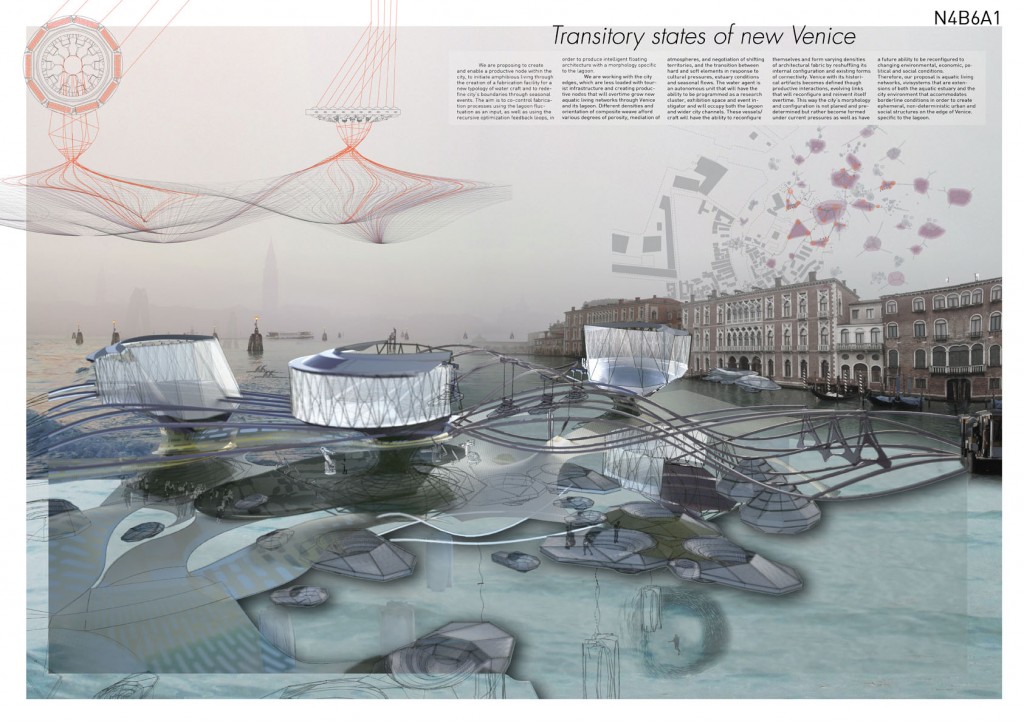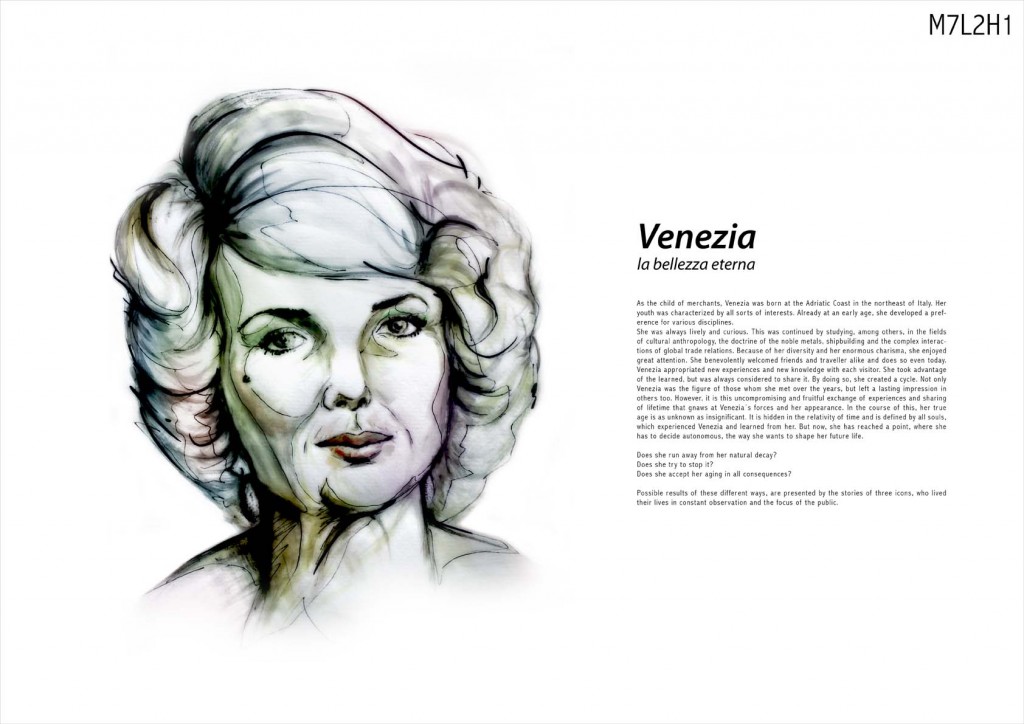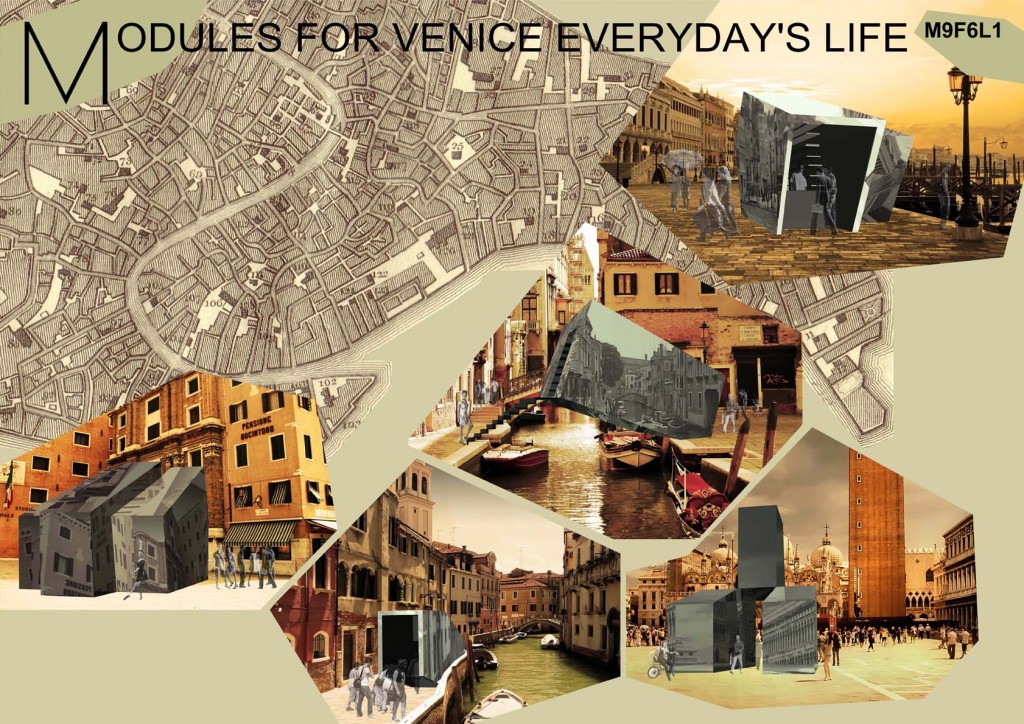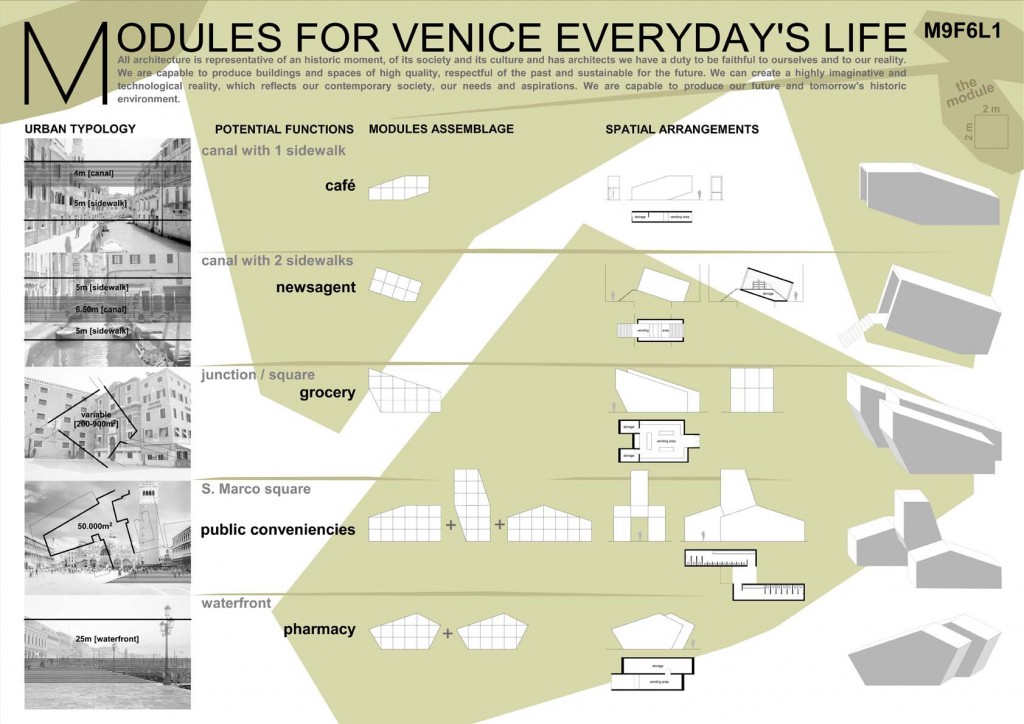Info:
Title: Modules for Venice everyday’s life - Code: M9F6L1Contest: Venice / 2011
By: J. Cortesão / C. Filippini / I. Martins Jorge
Views: 3534 Likes: 0
Votes:
BJARKE INGELS5 NERI OXMAN7 ELENA MANFERDINI4 MARIA LUDOVICA TRAMONTIN3 BOSTJAN VUGA44.6
Modules for Venice everyday’s life
Modules for Venice everyday’s life Project description Architecture is not something that one can choose to engage with or not; it is part of our daily life since we are born and have a massive influence on who we are and how we perceive reality. Defining the historic environment is particularly difficult because it implies personal and subjective factors, which are quite difficult to assess.
The relationship between the old and the new in particular how traditional architecture relates to contemporary architecture is a subject, which has always created great debates among architects. Starting with Morris Arts and Crafts movement, all the way to the recent “demolition theories” from OMA, through the international conferences of Athens (1931) and Venice (1964), it appears that all the words and thoughts spent on the subject have brought to nothing.
Venice is a great example of this old lull, where the local administrations do not even consider the possibility of engaging with contemporary architecture and the dialogue between the historic and the future environment, towards the concept of “history making” is considered an intellectual exercise only.
This whole issue seems to be rooted in the interpretation of the western Modern movement, which is often seen as the “anti-vernacular” tout-court. We feel that the debate of the traditional versus the modern is outdated, and that now we should concentrate on the relationship between the traditional and the modern, without forcibly implying the “versus”.
The “Modules for Venice everyday’s life” are conceived to respond different spatial and functional requirements. They aim to merge with the existing historic environment and at the same time stand out in their own right.
First of all we analysed the historic urban fabric and identified different types “urban spaces”, which were recurring from both a spatial and dimensional point of view. We then selected and defined five of them as the most representative: the canal with one sidewalk, the canal with two sidewalks, the waterfront, the square or junction and S. Marco Square.
We analysed the social geography of the city and in particular we identified some very simple and basic functions that are commonly found in every inhabited environment and are used by a wide range of people. These are: the café/bar, the newsagent/internet point, the pharmacy, the grocery shop and public conveniences. In Venice it seems to be a general lack of these functions, which actually would serve well both permanent residents, temporary residents and tourists, making the city look more like one instead of a static architectural monument.
Through the calculation of an approximate gross floor area required for each function we were able to match each function with one of the “urban spaces”. Using a square module of 2 m x 2 m, which represents the minimum leaving space of a single human being, we started playing in all three dimension in order to create some architectural objects which could efficiently spatially respond to both their function and location. At the same time the modules have a sculptural value on their own. They could be set up in unlimited different configurations and scales to suit any type of urban space. We imagined the cladding to be highly reflective in order to enhance the historic surroundings of the building while representing them from a different and new perspective.
We believe in heritage values; we believe conservation of the remaining material evidence of our past; but we do not believe in the creation of fakes or masks or lies.
Monuments, but also simple buildings, or entire quarters have been conceived at a precise historic moment for a precise function and their documentary value is not being questioned.
All architecture is representative of an historic moment, of its society and its culture and has architects we have a duty to be faithful to ourselves and to our reality. We are capable to produce buildings and spaces of high quality, respectful of the past and sustainable for the future. We can create a highly imaginative and technological reality, which reflects our contemporary society, our needs and aspirations. We are capable to produce our future and tomorrow’s historic environment.
Info:
Title: Modules for Venice everyday’s life
Time: 6 giugno 2011
Category: Venice
Views: 3534 Likes: 0
Tags: Architecture , Arts , Arts and Entertainment , Athens , Contemporary architecture , Cortesão , Filippini , History , Martins Jorge , Venice , Vernacular architecture








